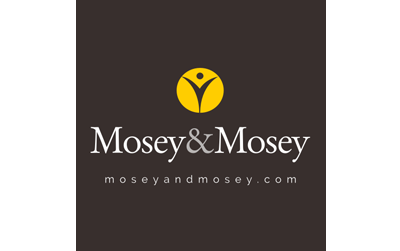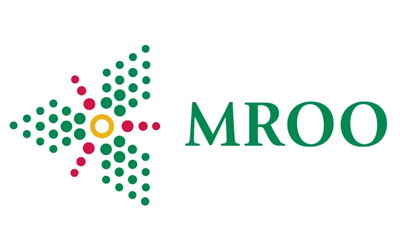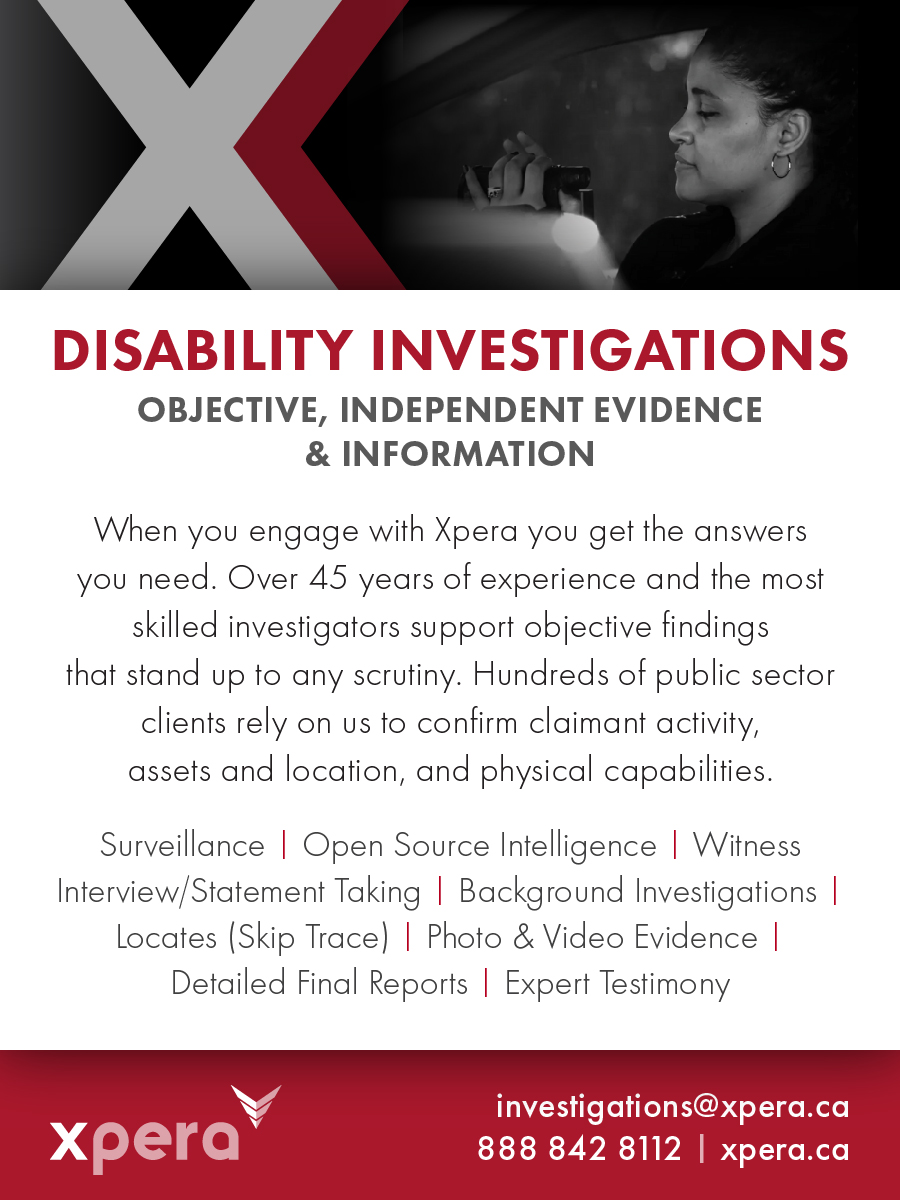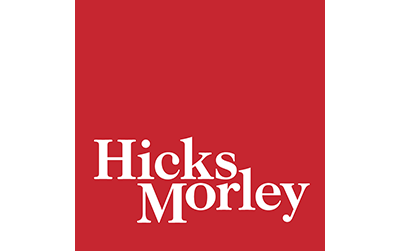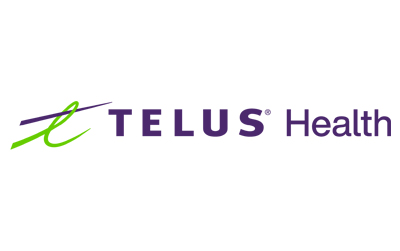
Issue #5 – JULY 2023
HR Navigator is published the last Friday of each month

I hope you are enjoying the summer and have found some time to disconnect from work and recharge your batteries.
We recently had some of our own summer fun with our first OMHRA virtual BINGO game. Thank you to everyone who participated – we were delighted to hear how much you enjoyed it!
In the July edition of HR Navigator, we are diving into the topic of “Benefits: Cost Containment,” exploring the question of how we can contain costs in the face of rising benefits costs and requests for greater benefits.
What I’ve learned is that requests for higher benefits amounts may not line-up with actual usage. For example, many times during the bargaining process a request for higher orthodontics amounts is put on the table, yet the actual claims are very low and as a result, the benefit is not widely used. Consequently, I am now sharing the claims history with the requesting employee group to show that this does not seem to be a priority benefit among their members. I also use this information to explain what the cost of each increase would mean to the overall compensation for this collective agreement. The last time I did this, the employee group was grateful for the statistics as it helped them gain a better understanding of the matter which in turn helped them explain the issue to their membership.
Thank you to everyone who submitted policies for the new repository that has been added to the LRIS. You will find them under the LRIS tab in the Members Lounge. Click on LRIS Policy Library to access them. Please remember that this is a living document – please send us any new policies as they are adopted by your municipalities.
The countdown to our Fall Conference (September 12-14 at Casino Rama) has begun and registration is now open! We have developed an engaging line-up of topics and speakers and I look forward to once again coming together to celebrate our profession and the 60th anniversary of OMHRA!
The following speakers will act as our guides through some of today’s most important challenges and opportunities:
- Frank Cappadocia, Dean, Continuous Professional Learning, Humber College
- Erin DeVreede, Manager, People – Talent, Payroll and Benefits, Township of Springwater
- Linda Edgecombe, Change and Leadership Expert, Hall of Fame Speaker, Executive Coach, Best Selling Author
- Jim Harrison, Facilitator, Queen’s University IRC
- Sébastien Huard, Partner, Emond Harnden
- Michael Jaworski, Associate, Hicks Morley
- Lori Kelly, Director of Human Resources, City of Mississauga
- Nahla Kor, President, Kor Capabilities Consulting
- Sarah Linkletter, Chief Operating Officer, EPSI
- Mary Madigan-Lee, Chief People Officer, City of Toronto
- Julia Nanos, Partner, Hicks Morley
- Jane Parr, Chair, OMHRA Education Committee
- Melanie Taylor, Organizational Development Consultant, Melanie Taylor Consulting
- Melanie Zak, Learning and Organization Development Partner, City of Barrie
I hope you will make plans to join us for this important opportunity to learn, share and celebrate! We have several activities planned to ensure we celebrate in style!
Enjoy your summer and see you in September!

Lori Bolton, President

Designing a Group Benefit Plan: Striking the Balance Between Comprehensive Coverage and Sustainable Costs
Delivering a comprehensive benefit plan that supports attraction and retention is an enduring goal for employers. At the same time, increasing cost pressures and benefit trends point to the need for a sustainable plan design. Meeting these challenges requires thoughtful consideration and most certainly, meaningful engagement with stakeholders.
Cost Control
In general, there are two areas employers can focus on when it comes to benefit costs. Certainly, program costs that include all the expense factors associated with delivering a plan must be competitive to maximize the value of every benefit dollar. Beyond program costs, plan design and claims utilization become major players in determining ongoing costs. The right cost containment strategy will vary by benefit line and by each employer. Additionally, group size and demographics will influence the plan options available through the benefits provider. Collaboration with providers and advisors can help ensure employers begin a strategic review right from the start.
Once Size Does Not Fit All
Health and dental costs are largely driven by claims utilization. Accordingly, plan sponsors looking to impact costs must consider changes that will have an impact on usage; drugs and paramedical coverage representing two common examples. Ultimately, the right plan design will be as unique as each employer; however, there are ways to implement changes that aid in cost control while also protecting the integrity of the overall plan. From managed drug formularies to preferred provider networks and the introduction of spending accounts, the possibilities are many. Seeking feedback from stakeholders can provide plan sponsors with important insights when determining the right plan design. Surveys, focus groups, and engaging in open dialogue with employees can aid in crafting a plan that will strive to meet diverse needs while keeping costs in check.
Evolving Market
When considering plan design, it is important to take a broad view given the many developments and opportunities that exist beyond the core plan. New products and services offer innovations that can encourage good health while supporting cost control. Pharmacogenetics, virtual care and health coaching are just some of the examples employers may consider. Telehealth modes of delivering care will continue to influence the myriad of options available.
Collective Bargaining
Certainly, plan changes must be negotiated as per any collective agreement. Negotiations may provide an opportunity to trade desired enhancements for long-term cost-saving measures. Your benefits advisor can assist in reviewing proposals and possibilities for consideration.
An Ounce of Prevention…..
Investing proactively in health and wellness will always support a better bottom line. The best plans will include proactive measures like wellness programs and preventive care initiatives to promote healthy lifestyles and reduce long-term healthcare costs. Additionally, the evolution of the virtual marketplace creates tremendous opportunity for cost-effective integration.
Word On the Street
The success of any benefit plan relies on effective employee education and communication. Employees are key stakeholders to the benefit plan yet often there are gaps when it comes to understanding plan coverage and costs. This can have a detrimental impact on perceived value. Educating all employees is imperative to cultivating value for the existing plan and to achieving successful change in the long term. Regular communication channels, such as seminars, newsletters, and online resources can help keep employees informed about the plan’s features, cost-saving measures, and available resources.
Designing a group benefit plan that balances comprehensive coverage with sustainable costs is a complex undertaking. Start the conversation with your advisor and provider to see what the possibilities are for your organization.

Your employees may be delaying retirement—and if so, you can help them find affordable health care options for now and later.
Canada’s aging workforce has been a hot topic in recent years, as many employees are finding it necessary to delay retirement.
According to a recent survey, nearly two-thirds of Canadian pre-retirees say the rising cost of living is preventing them from retiring when they would like to.1 Most say this is because of a shortfall in savings and the performance of their investments. The top concerns to financial security after retirement cited in the survey are inflation and the cost of health care.
As a result, employers are starting to look at different options to support their older employees and help them as they transition to retirement. With the cost of health care a top concern—it’s not surprising that a key ingredient of successful retirement planning is health care coverage. If your organization does not provide coverage for your employees past the age of 65 or after retirement, there are options to consider.
Group health care services provide significant benefits to working employees; however, most group plans have an end date relative to age, such as age 65 or 70. For this reason, many employees look for alternate coverage to meet their full retirement needs—and they may reach out to your HR team. An excellent source of information is the OMERS retirement primer called Preparing to retire2.
At Victor, we offer municipal and public sector employees and retired workers a comprehensive insurance program that includes health, dental, travel, RecoverEase and life insurance. And, we offer special rates for OMERS members. Your employees can go to our website for more information or you can arrange to have one of Victor relationship managers come to your office and provide your retiring employees with an information session.
Please contact one of our relationship managers directly for more information that you can distribute to your employees pre-retirement, or to arrange a pre-retirement seminar:
- Renata Ledo
renata.ledo@victorinsurance.com : 905-755-2047 | 1-877-732-2879 Ext. 2047 - Maricel Nieva:
maricel.nieva@victorinsurance.com : 905-755-2037 | 1-877-732-2879 Ext. 2037
Or, visit us online at www.mrooinsurance.ca
Our goal is to ensure that your employees who are nearing retirement have peace of mind in the final stage of their work career—and during their next big adventure.
- “Survey finds Canadian employees delaying retirement due to rising cost of living,” Benefits Canada.com (Nov. 17, 2022)
- “Preparing to retire,” OMERS.com
OMHRA Member Spotlight
Jennifer Gohn
Manager, Human Resources, Town of Orangeville
OMHRA Member since 2002

- Thoughtful
- Kind
- Patient
If you had to state your three rules of engagement, what would they be?
- Flexibility and Resilience – Keep moving forward and adapting to the change that’s always in front of you. Your strength becomes important during the tough times.
- Listen – be engaged, listen intently to understand and be present.
- Ethical – know and understand the rules and work within them.
Did you have an important early influencer in your life? Could you reflect on their role in shaping you and perhaps preparing you to be a resilient leader?
One of my first supervisor’s when I worked in Community Living was steadfast, consistent and caring. When I reflect now on her as the manager to my 20-year-old self and as I now managed younger staff, I see her patience, and steadfastness. I felt she was there for us and supporting us even though we didn’t see her everyday. I have always been a seeker of the best me I can be and I think she played a role in how I model my management style today.
What advice do you have for people just beginning their careers in human Resource Management?
Take it all in, be willing to learn and grow, get involved and be adaptable. And be curious – there is so much to learn and so many ways to grow in the field of HR.
What may surprise your colleagues about you?
I enjoy snowmobiling in the winter and we are thinking about doing trail riding with the ATV’s as well.
Do you have a hobby or non-work-related activity that you think enhances your effectiveness at work?
My hobbies involve community service – I am a member and past president of CFUW – Headwaters. CFUW stands for Canadian Federation of University Women and Headwaters is the local club to where I live. I am also a member of the Order of the Eastern Star and currently hold an elected position on the Grand Executive which would be similar to a Board of Directors at the provincial level of the organization. This community work has enhanced my leadership, networking, management and governance skills and provided me the opportunity to meet people from all over Ontario and beyond.
What is your favourite quote?
I don’t have a favourite quote per se – there are so many great quotes out there, it’s hard to pick just one. What I like to do, is each morning, is listen to a daily meditation that helps to guide me through the day. Each day the meditation is different and becomes my quote for the day. Today’s meditation was “It’s not what I do, but rather who I am, that determines the quality of my life.” It talks about centering my mind on the love in my heart, that I may be a beam of light to whomever I meet today.
I find taking a few moments every to meditate helps to centre me for the day, be the person I am capable of being in any given moment, put aside my worries and be my true self.
What is your favourite work of fiction?
I do enjoy reading when I have some down time, but that doesn’t seem to happen as much lately – I would say I don’t have a favourite work of fiction and enjoy reading different genres.
What book on human resource management should every practitioner read?
I really can’t say what book on HR Management should every practitioner read – I really think it depends the individual’s interests and areas grow and learning for that person. Just being curious and willing to learn and grow as a HR professional are important and I recommend finding the resources that work best for that person’s development.

How To Transform Your Employee Health Benefit Plan To Save Money And Support Your Workforce
Costs remain a big concern in employee benefit plan design. It is a struggle to offer a generous benefits package while keeping costs to a minimum – delivering value in addition to cost-containment. A good strategy to transform your employee health benefit plan that can save you money and support your workforce is to educate employees on individual health insurance options.
If, like many employers, you decide to limit certain employee health benefits while investing in new ones, it will fall on you to make sure that systems are in place to support plan members when these plan design changes occur. Communicating the option of individual health insurance can deliver the support system plan members need to successfully manage transitions – like removing drugs or major dental coverage or capping paramedical maximums.
Personal health insurance – also known an individual health insurance – can provide coverage for individuals and their dependents. When faced with changes to their group plan, your employees need to know that they can purchase individual health coverage personally, and it is issued and owned in their name. The coverage is for life, regardless of where they work, or if they are working at all.
Where your group health plan provides very good coverage, the individual plan can deliver flexibility and coverage for the health benefits each employee wants most, like major dental costs or visits to massage therapists. Most importantly, the individual health insurance plan co-ordinates coverage with your current group plan to increase overall protection.
Three Things Employees Need To Understand About Individual Health Insurance
When introducing the concept of individual health insurance as a complement to your group benefit package, it is important to establish three key points of understanding with plan members:
- The advantages of having individual health insurance
Personal health insurance coverage can serve as an important financial cushion for a member if they would like additional drug, dental and/or extended healthcare coverage or they want a “safety net” in place if their work is in transition or they are thinking of becoming self-employed. Having personal insurance in place ensures an individual reduces the gaps between the amount of healthcare cost protection they need and their group insurance coverage covers those times when they don’t have group health coverage at all. - How to submit claims to two plans
An employee covered by a group plan may be confused about how individual health insurance claims can be used to maximize their health benefits. You can help build understanding of how to co-ordinate the plans by reviewing how they can work together.According to Canadian Life and Health Insurance Association Guidelines (CLHIA), the first payer is the Group Plan. The second payer is the Individual Plan. When submitting a claim to the individual insurer, the employee should attach all copies of original receipts along with the explanation of benefits (EOB) they received with their claim from the group plan. This individual insurer will calculate the portion of the eligible expenses it will pay.
- How the plan maximums work together
It is important for employees to recognize that the group and individual health insurance plans are almost always going to have different types of coverage, maximum visits per year, and deductibles. Some health insurance plans limit the number of visits to a health or dental practitioner per year – for example, once every 9 months – and some plans have an annual dollar maximum. When one of the plans (first or second payer) pays out any benefit for a visit, it will count as a visit towards the maximum under both plans.The important thing to know is that the plans will work together to permit coverage of up to 100% of eligible expenses. Group health insurance always pays benefits first, and individual health insurance pays eligible remaining expenses. Coordinating the benefits provided by the two plans could be very useful if someone in the employee’s family needs an expensive pair of glasses or orthodontic appliance.
Clear Communication Is Key to Cost Containment Success
Learning more about the nuances of individual health insurance options so you can build a solid plan is easier when connecting to a broker like SBIS. Delivering information on individual health plan options to your workforce can go a long way to satisfying employee needs when you make group health benefit plan changes, creating a win-win for you and your team.

Mandatory Switching to Biosimilar Drugs: Considerations for Employers in Unionized Workplaces
On March 31, 2023, the Ontario Drug Benefit (the “ODB”) program began transitioning from coverage for certain originator biologic drugs to biosimilar versions of the drugs. As of December 29, 2023, the ODB program will only cover biosimilar versions of the affected biologic drugs.
Ontario is the eighth Canadian jurisdiction to implement a biosimilar switching policy, following British Columbia, Alberta, New Brunswick, Quebec, Northwest Territories, Nova Scotia and Saskatchewan. The Ontario government states that switching will allow it to “fund more new drug therapies, bring innovation to the health care system and continue its work to deliver better, connected patient care.”
Employers with group benefit plans may wish to similarly implement a mandatory biosimilar switching policy in order to reduce costs, especially where there is risk that the plan may pick up costs associated with biologic drugs previously covered by ODB for employees or retirees over age 65. However, as explained below, employers of unionized employees may be restricted from implementing such a policy due to the terms of their collective agreement.
Overview of Originator Biologic, Biosimilar and Generic Drugs
Health Canada states that biologic drugs come from living organisms or from their cells and are often made using biotechnology. On the other hand, biosimilar biologic drugs, or biosimilars, are drugs that are highly similar (but not identical) to biologic drugs that are already authorized for sale. Biosimilars enter the market after the reference biologic drug’s patent has expired.
Biosimilars can be contrasted with generic drugs, which are small molecules that are chemically synthesized. Generic drugs contain identical medicinal ingredients to their reference products.
Implications for Employers of Unionized Employees
To date, arbitrators have not considered an employer’s decision to switch benefit coverage from originator biologic drugs to biosimilars. However, principles from cases involving mandatory generic drug substitution programs are relevant.
As a preliminary point, an employer may argue that biosimilar drugs are equivalent to generic drugs and if a collective agreement only provides coverage for generic drugs, then biosimilar drugs should similarly only be covered. However, this argument would likely be challenged since unlike generic drugs which are identical to their reference drug, biosimilars are not identical to their reference biologic drug. Moreover, Health Canada expressly states that biosimilars are not the same as generic drugs.
In the context of mandatory generic drug substitution cases, arbitrators have held that absent permissive collective agreement language requiring employees to use a generic drug rather than a brand name drug, imposing such a requirement constitutes a breach of the collective agreement. For example, in a case where the collective agreement language stated that the employer will pay the “full cost” of prescription drugs less the dispensing fee, the arbitrator found that this language did not permit the employer to limit coverage to generic drugs. Based on this reasoning, an arbitrator may determine that if a collective agreement provides drug coverage generally and does not distinguish between coverage for biologic and biosimilar drugs, an employer could not limit coverage to biosimilar drugs only.
Moreover, arbitrators have held that restrictions to a plan member’s ability to access brand name drugs in favour of generic drugs are substantive changes in coverage, rather than administrative or procedural changes, and therefore impermissible if that would change the benefits provided pursuant to the collective agreement. This reasoning would arguably apply to biosimilar drugs as well.
Arbitrators will also consider an employer’s past practices. If an employer has historically provided coverage for originator biologic drugs, and the collective agreement does not clearly limit coverage to biosimilars, employees could argue that the employer is “estopped” from limiting coverage to biosimilars.
A final consideration is that even where a collective agreement contains language expressly limiting coverage to the cost of a generic drug unless a physician states that no substitutions are permitted, an employer may not introduce additional limitations on the reimbursement of a brand-name drug beyond those set out in the collective agreement. When this reasoning is applied to biosimilars, a union could argue that the collective agreement language limits coverage to biosimilars unless a physician states that no substitutions are permitted but does not impose further obligations, such as a requirement for a physician to complete a form describing prior adverse reactions to the biosimilar drug.
Ultimately, employers seeking to implement a switching program must carefully consider any restrictions imposed by the applicable collective agreement. Where the collective agreement does not clearly permit an employer to limit coverage to biosimilar drugs, employers will likely need to bargain the issue.

How emotional intelligence can boost your organization’s bottom line by increasing productivity and saving money
Organizations continue to focus on reducing costs and improving employee productivity. Many orgs have also started to incorporate emotional intelligence (EI) training into their development programs. These initiatives are more connected than perhaps they first appear.
Perhaps most importantly, the EQ-i 2.0 model of emotional intelligence is an effective tool for organizations seeking a competitive advantage by offering strategic training and development. It’s effective and efficient.
The EQ-i 2.0 model of emotional intelligence is a scientifically validated assessment instrument that measures an individual’s emotional and social functioning. The assessment is based on five key skills areas: self-perception, self-expression, interpersonal, decision-making, and stress management. By understanding and applying these skills which are highly correlated with emotions, individuals can develop strategies to improve their effectiveness and enhance their relationships, decision-making, and overall well-being.
But there are indirect cost-saving opportunities as well. One of the key benefits of incorporating the EQ-i 2.0 model into an organization’s culture is the potential for reducing year-over-year workforce costs like hiring, onboarding, training, productivity loss, decreased engagement. Employees who have high levels of emotional intelligence tend to have better relationships with their colleagues, managers, and customers. This can lead to fewer conflicts and misunderstandings, which can result in less conflict, fewer legal matters, reduced absenteeism, and less turnover. These can have a huge savings for any organization.
Additionally, employees with high levels of emotional intelligence tend to be more resilient in the face of stress and change. This can lead to increased productivity and better decision-making, even during difficult times. By providing employees with the tools and skills to innovate and navigate challenges, organizations can reduce the negative impacts of stress on their workforce and, ultimately, their bottom line.
Incorporating the EQ-i 2.0 model into an organization’s training and development strategy can also lead to increased employee engagement and satisfaction. Employees who feel supported and valued by their organization are more likely to be motivated, productive, and committed to the company mission.
In an August 2022 Issue Briefing, The Conference Board of Canada reported that training and development rank as one of the most important employee considerations when choosing to accept a new position or stay with an organization. For instance, one study found that 94 per cent of employees would stay with a company longer if their company invested in their career development. Another study found that 37 per cent of employees would consider leaving their organization if training and development were not offered, while 79 per cent indicated that training opportunities are important when job searching.
Finally, the EQ-i 2.0 model can help to create a positive work culture. By promoting emotional intelligence skills like emotional self-awareness, empathy, and social responsibility, organizations can create a more supportive and collaborative work environment, where employees feel safe to express their ideas and opinions. This can lead to increased creativity and innovation, as well as improved teamwork and communication.
Emotional intelligence skills development is a valuable tool for organizations looking to maximize the return on their deployed resources, while also improving employee engagement and satisfaction.
Investing in emotional intelligence training through the EQ-i 2.0 model can be a smart and strategic investment for any organization looking to boost their bottom line.

Five tools every plan sponsor should consider to cap benefits costs
The future of private drug insurance can be friendly–as long as plan sponsors take action in mitigating ever-increasing drug costs through a variety of strategies.
Employers seeking to attract and retain employees are worried about meeting the needs of their diverse employees. This means many are offering more for benefits such as extended healthcare, mental health services, drugs and paramedical practitioners.
As a result, employers require flexible plan design options to manage their benefits plans, along with reining in costs and ensuring that their plan offerings are targeted and robust in order to remain attractive to plan members. They should consider cost containment or utilization management programs such as mandatory generic substitution, prior authorization programs, step therapy, biosimilar adoption and virtual pharmacy programs which have the added benefit of improved medication adherence.
“The goal is to keep the plan sustainable,” said Lavina Viegas, Director, Client Service Management, TELUS Health. “Plan sponsors [need] to manage their plans more effectively.”
Taking proactive steps to manage costs.
Employers are grappling with new issues post COVID-19, from a surge in diabetes and mental health cases to a dramatic increase in claims for antidepressants and an uptick in the number of claimants under nine years old. They’re also seeing higher claims counts and higher costs per claim due to missed diagnoses during the pandemic and more advanced cases of cancer and chronic diseases.
As a result, employers need to begin putting in plan safeguards now. Here are some effective ways to cap costs:
- Mandate generic substitution.
Generic claims continue to increase: 66.2 per cent of all claims were for generics in 2022–up from 65.6 per cent in 2021.* That’s because generic substitution, which ensures that plan members are prescribed generic drugs in lieu of high-cost brand name medications, can lead to dramatic cost savings.And 62.2 per cent of certificate or primary card holders had plans that enforced mandatory substitution, where the plan payment is limited to the generic cost of the drug. Claimants that wish to continue on the brand name can choose to pay the difference between brand and generic costs under this plan design option.
- Utilize prior authorization.
In 2022, more than 8 out of ten certificates had drug plans with prior authorization. Prior authorization is an effective way of ensuring that physicians and other health care providers prescribe medications judiciously. Because they have to get approval from the plan provider before a prescription is approved, having prior authorization in place, especially for high cost drugs, can ensure that only the most necessary drugs are prescribed in a timely manner, said Viegas. - Use step therapy to reduce brand-name drug use.
Step therapy is “really a program to help you slow down the expenses related to premium-priced medication,” said Viegas. It’s a process by which patients are started on lower-cost medications before ‘stepping up’ to higher-cost drugs.Step therapy ensures that first line, cost-efficient options are explored first. As a result, this approach can save a lot of money when it comes to conditions like diabetes, which may be treated with higher-cost 2nd and 3rd line treatments. “It’s giving the plan more opportunity to use the limited drug spend,” she said.
- Utilize virtual pharmacy.
Virtual pharmacy options can be an effective tool in an employer’s cost-savings strategy. And Canadians are seeking digital healthcare solutions now that the pandemic has forced them to seek care virtually, said Viegas. As a result, many would be open to exploring virtual pharmacy offerings, in which a pharmacist can partner with employers and work with benefits plan members to boost medication compliance, reduce adverse events, and ultimately curb short-term and long-term disability rates. - Opt for biosimilars.
Eight provinces and two territories have announced they are switching public plans’ coverage of originator biologics—which are very expensive—to lower-cost biosimilar biologics. Now it’s up to private plans to make the switch. In B.C., for example, that’s happening; biosimilars accounted for 64.7 per cent of claims for biologics in December 2022 – up from 5.5 per cent in 2019. In Quebec, biosimilars’ share of all biologic claims to private plans grew to 38 per cent in April 2022 from 14.4 per cent in October 2021. The news on this front is good: for the first time in 10 years, the eligible amount for specialty drugs grew at a slower pace than traditional drugs, likely influenced by the provincial biosimilar adoption policies.
Whatever options they choose, plan sponsors have a wide range of strategies they can employ to reduce the ever-increasing pressure on their benefits plan. “The end goal is to curb that drug cost increase,” said Viegas.
*The TELUS Health 2023 Drug Data Trends & National Benchmarks report analyses claims data from the 2022 TELUS Health portfolio.

Table of Contents
- 1
- 2
- 3
- 4
- 5
- 6
- 7
- 8

